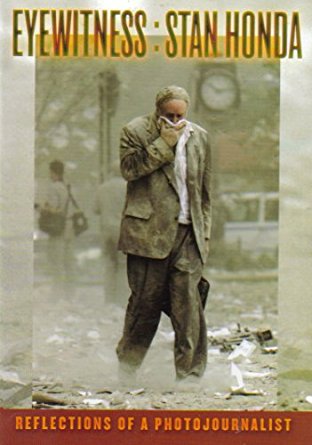Eyewitness: Stan Honda: Reflections of a Photojournalist (film)

DVD cover. Courtesy of The Frank H. Watase Media Arts Center, Japanese American National Museum
View in the Densho Encyclopedia
Short documentary film about photojournalist Stan Honda, who gained fame for the photographs he took of the aftermath of the attacks on the World Trade Center on September 11, 2001.
Eyewitness largely tells its story through Honda's own words and through his photographs. The first half of the film focuses on the 9/11 photographs: Honda's recollections of how he came to be at the scene that day, the chaotic atmosphere, and the story behind two of the most famous photographs of that day, his images of a dust covered bank clerk Marcy Borders and of businessman Ed Fine escaping the buildings covering his mouth and still carrying his briefcase.
Honda links the calls for rounding Arab Americans after the attacks to the hysteria that led to the mass removal and incarceration of Japanese Americans. He recalls his parents' incarceration at the Poston , Arizona, camp and his project to visit and photograph all of the ten War Relocation Authority (WRA) concentration camp sites. The final segment of the film looks at Honda's coverage of the Iraq war, with the dusty and hot conditions there leading him to compare them with conditions at the WRA camps.
A production of the Frank H. Watase Media Arts Center of the Japanese American National Museum , Eyewitness was funded in part by the Los Angeles Cultural Affairs Department. John Esaki produced, directed, and edited the film.
Might also like Changing Season: On the Masumoto Family Farm (2015); Caught in Between: What to Call Home in Times of War (2004); 9066 to 9/11: America's Concentration Camps Then ... and Now? (2004)
| Release Date | 2003 |
|---|---|
| Runtime | 26 minutes |
| Director | John Esaki |
| Producer | John Esaki |
| Starring | Stan Honda |
| Music | Michael Kobayashi |
| Cinematography | Akira Boch |
| Editing | John Esaki |
| Studio | Frank H. Watase Media Arts Center, Japanese American National Museum |